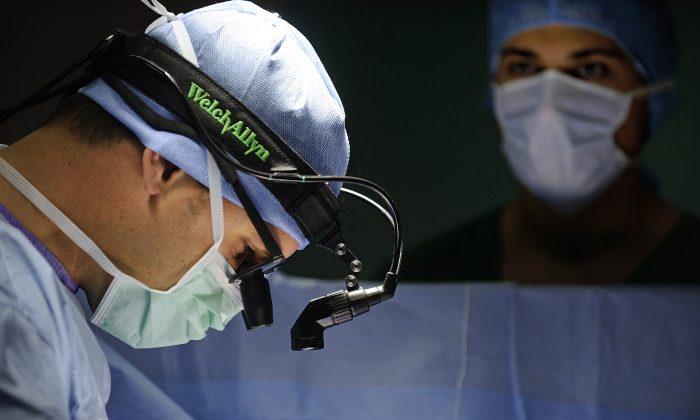Scientists are on the cusp of potentially the greatest advance in cardiac care since the heart transplant.
Federal regulators just approved a device that allows physicians to replace faulty heart valves without opening patients’ chests up. The procedure could save the lives of countless patients who are unfit for surgery.
For their new lease on life, these patients can thank a few dozen pigs, which were the first animals to undergo the procedure and prove that it could be a lifesaver. They stand out as only the latest evidence that animal research is essential to medical advancement.
The procedure the pigs pioneered is called transcatheter aortic valve replacement (TAVR). Doctors performing TAVR insert a tube holding a folded-up valve into the groin. They thread the tube into the heart and then open up the valve with a balloon.
Before TAVR, valve replacements required open-heart surgery. Many seniors in need of a new valve were too frail to survive such an operation. That was especially true of patients with aortic valve stenosis—a severe narrowing of the aorta.
Now that Americans are living longer, aortic valve disease has grown more common. Nationwide, its incidence has increased by 35 percent over the last decade. It kills 8,000 Americans each year.
TAVR offers hope that this condition might no longer be a death sentence.
This breakthrough owes its existence to animal research. When Danish physician Henning Rud Andersen conceived of the procedure in 1989, he first tried it in pigs. Not long after, French cardiologist Alain Cribier attempted a similar procedure in sheep.
These tests proved it was possible to replace heart valves without surgery—an idea that, then, seemed preposterous.
TAVR isn’t the first cardiac procedure that began with animal research. World-renowned surgeon Michael DeBakey performed thousands of cardiac operations using techniques developed in dogs—including the first successful heart bypass. Thanks to his research, doctors now perform over 500,000 of these surgeries in the United States annually.
Research involving dogs was also crucial to the development of everything from the pacemaker to artificial heart valves.
Animal research is currently helping scientists understand other devastating diseases including Alzheimer’s and Parkinson’s. Identifying treatments for these diseases of aging will be more urgent as Americans live longer.
Yet some activists want to end animal research models. They claim approaches like computer modeling and cell cultures can substitute for animal research.
But it’s hard to believe such techniques could have convinced a skeptical medical community—and regulators—that certain heart procedures were safe for humans without first studying new procedures in animals.
Consequently, those who oppose animal testing are obstructing medical innovations that can add years to the lives of older Americans.
Consider former Secretary of State Henry Kissinger, who underwent TAVR last year. He said, “I am more energetic, people tell me I look better, and I feel much less tired.” Without the procedure, his doctor told him he'd be in a wheelchair with only a 50-50 shot of living another year.
Similarly, film director Robert Altman, who received a new heart around 1995, continued to make movies until his death 11 years later. These added years of creativity were thanks to animal research.
Examples like these show the rewards that animal models provide. Activists who oppose this essential technique are seeking to deprive future patients—particularly seniors—of the many benefits animal research has to offer. And that’s just heartless.
Frankie L. Trull is president of the Foundation for Biomedical Research.
